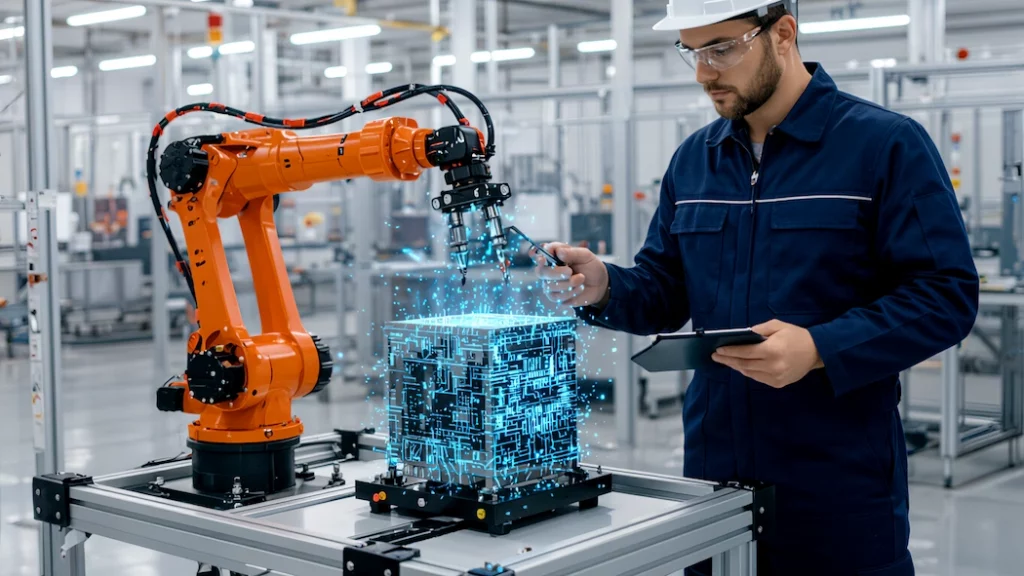Disconnected Intelligence: Why the Internet is AI’s Biggest Weakness—and How to Overcome It
By Gordon Barker
In an era increasingly shaped by artificial intelligence, few people stop to question a fundamental truth: most AI tools are useless without the internet.
From predictive maintenance to AI-powered chatbots on the shop floor, nearly all modern AI depends on a constant cloud connection. But what happens when the connection drops? What if your factory’s core processes now rely on that AI—and by extension, on the web?
This article explores the hidden dependency of AI on internet access, and more importantly, how to run AI tools completely offline using open-source models like LLaMA, Mistral, and GPT-J. Whether you operate a factory, a warehouse, or any mission-critical business, here’s how to take control of your AI infrastructure and remove cloud dependency once and for all.
The Hidden Dependency: AI’s Reliance on the Internet
Most AI today works like this:
- You input something (text, data, commands).
- It’s sent over the internet to a data center.
- A remote server processes it and sends the output back.
Tools like ChatGPT, Gemini, Copilot, or even custom factory dashboards operate this way. If the internet drops, they stop working. That’s a massive issue if you rely on AI to:
- Manage machine operations
- Monitor and predict system failures
- Guide workers through SOPs
- Run warehouse logistics
- Handle security or compliance tasks
What’s the Risk?
- Outages: Network disruptions can halt AI-based processes.
- Cyber Attacks: Cloud platforms are vulnerable to denial-of-service or data breaches.
- Latency: Delays caused by server communication are unacceptable for real-time decision-making.
- Vendor Lock-in: Reliance on a single provider creates long-term risk.
The Solution: Run AI Locally
Modern open-source AI models can be downloaded and run entirely on your own hardware—no cloud, no subscription, no internet required.
This approach is often called:
- Offline AI
- On-premises AI
- Edge AI
It means the model “lives” in your factory, running 24/7 whether the internet is up or down.
Best Offline AI Models for Business Use
| Model | Size | Best For | Strength |
|---|---|---|---|
| LLaMA 2 / LLaMA 3 | 7B–70B | SOP chatbots, fault diagnosis | Balanced and widely supported |
| Mistral / Mixtral | 7B / 12.9B MoE | Fast local inference | Very efficient |
| GPT-J | 6B | Document search, workflows | GPT-style responses |
| Phi-3 | <2B | Embedded devices, phones | Lightweight and accurate |
| Gemma | 2B–7B | Internal tools | Built by Google, versatile |
Hardware: What You Need to Run AI Locally
Option 1: Workstation
- CPU: AMD Ryzen 9 or Intel i9
- RAM: 64GB or more
- GPU: NVIDIA RTX 3090, A6000, or similar
- Storage: 1–2TB SSD
Option 2: Industrial Edge Device
- Devices: NVIDIA Jetson Orin, Raspberry Pi (for small models)
Option 3: Factory-Wide Local Server
- Acts as a local “AI brain” accessible by all other devices
- Can be hardened for security, backup, and low-latency inference
What You Can Do with Offline AI
- Predictive Maintenance: Analyze sensor data and forecast failures before they happen.
- SOP Guidance Chatbot: Let workers ask how to restart machinery or check safety procedures.
- Inventory Forecasting: AI predicts restock points and generates orders.
- Visual Inspection: Detect product defects with vision models paired with LLM analysis.
- Voice Interface: Local voice-to-text and commands, no internet required.
The Software Stack
- Ollama – Lightweight model runner
- LM Studio – GUI for chatting with local models
- LangChain / LlamaIndex – Build smart systems using your own documents
- Haystack / RAG – Document search and retrieval tools
- Docker – Use containers for deployment across environments
Hybrid Systems: Offline Backup for Cloud AI
Even if you prefer cloud-based AI, hybrid strategies help ensure resilience.
- Failover Mirror: Cloud by default, local model if internet fails.
- Edge Nodes: AI built into devices at critical stations.
- Model Distillation: Compress large cloud models into smaller on-site models.
- Local API Wrapper: Mimic cloud APIs locally to avoid rewriting applications.
Case Study: Offline AI in Aerospace Manufacturing
A French aerospace parts supplier implemented LLaMA 7B as a local SOP and safety assistant:
- Fully air-gapped (no internet access)
- Staff query safety rules and manuals on secure terminals
- Model retrained monthly on updated internal documents
- Reported 42% faster onboarding and reduced network failure risk
Future-Proofing Your Business: Why Offline AI Matters
By relying on cloud-only AI:
- You outsource intelligence
- You risk service outages
- You lose control over sensitive operational data
By going local:
- You retain full control
- You increase uptime and independence
- You remove third-party data exposure
Final Takeaway: Your Intelligence, Your Terms
AI is a powerful tool—but only if it’s under your control. Don’t rent your business brain from a remote server farm. Host it yourself. Own it. Rely on it—even when the internet is down.
TL;DR
- Problem: AI tools are mostly internet-dependent
- Solution: Run open models (LLaMA, Mistral, GPT-J) offline
- How: Use affordable hardware + tools like Ollama and LangChain
- Benefit: Uninterrupted operations, security, speed, and control
